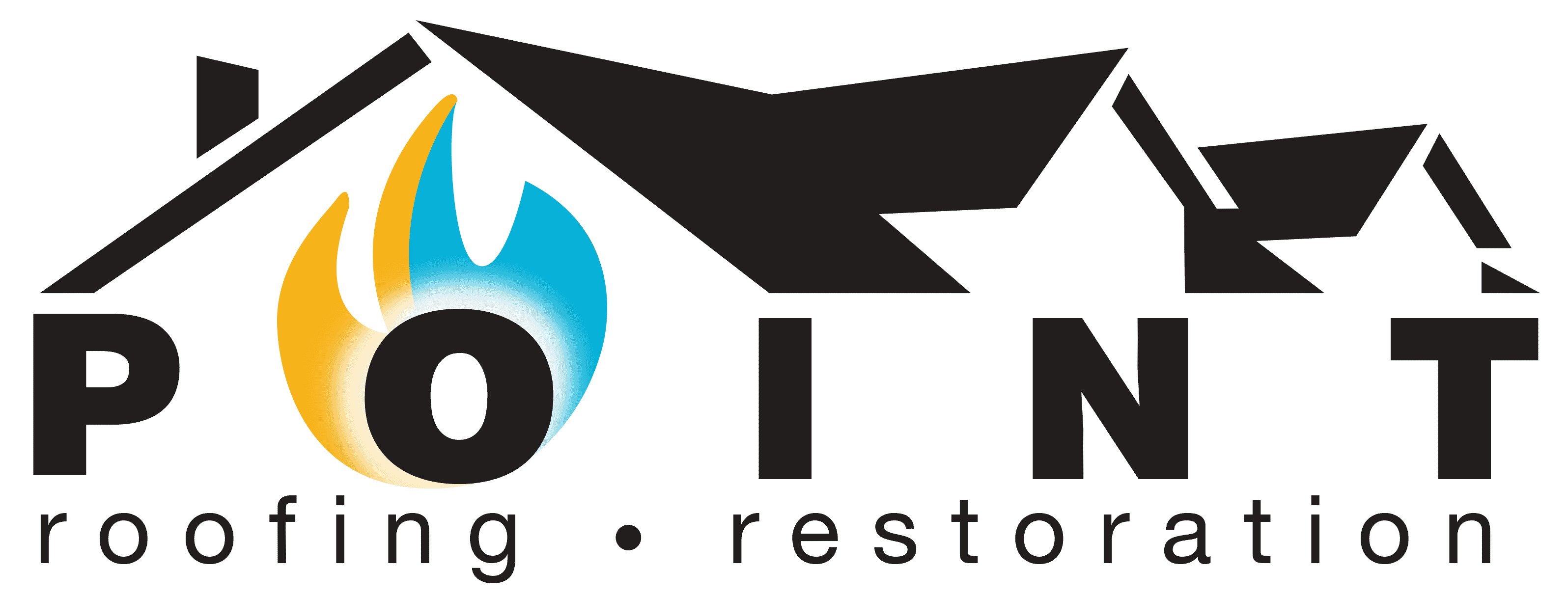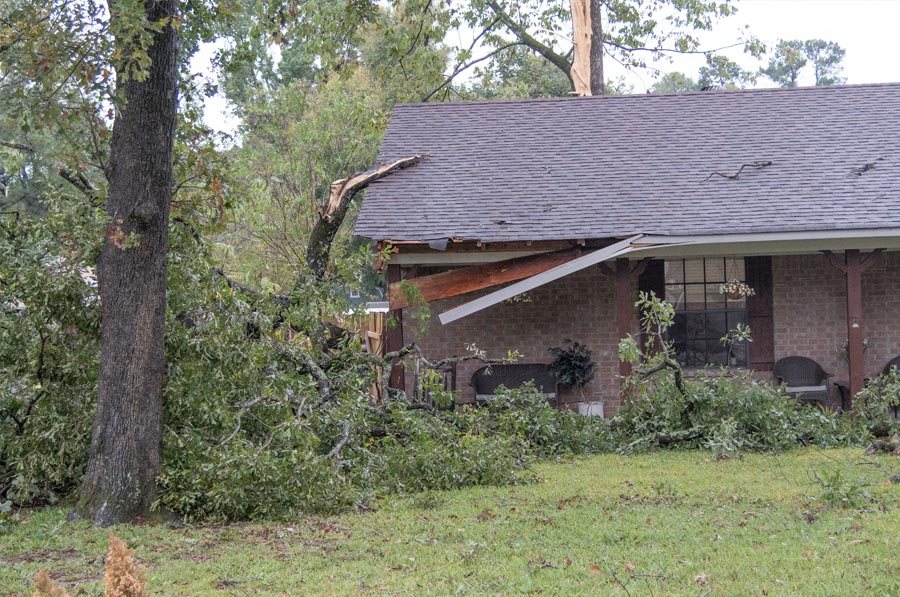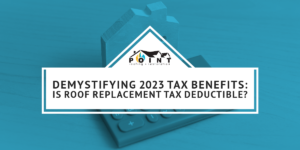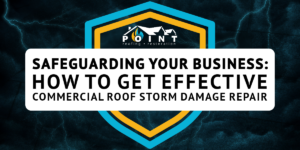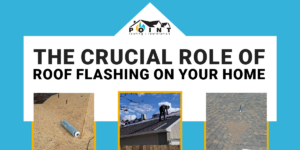Like many parts of your home, your roof is underappreciated until something is wrong. You expect your roof to keep your home safe from the elements like rain, sleet, snow, and wind. And if you’re like most homeowners, you don’t pay much attention to it as long as it’s doing its job.
While you might ignore your roof, it takes its fair share of abuse from the elements.
How do you know if you have a storm-damaged roof? How do you know if the wind or rain is starting to break down your roof and what should you do about it?
Read on to learn more about the types of damage that can happen to your roof and what signs to watch for that there’s a problem. Then learn how you should get your insurance company involved in repairs.
Types of Roof Damage
Roof damage is different from normal wear and tear over the life of your roof. While your roof is meant to withstand the elements, sometimes storms prove to be too much for a roof.
Depending on where you live can impact the type of damage your roof might experience. Let’s take a closer look at the elements that could cause damage to your roof.
Wind
Whether you live in a hurricane zone or not, there are almost always a few storms every year where the wind is beyond normal and can cause problems for the roof.
The National Weather Service says a gale wind is a wind with speeds of 39 – 54 mph. Winds at this speed have the capacity to cause damage to the roof or shingles.
Hail
Hail storms are a little less frequent than say rainstorms, yet they can be very problematic for your roof. When hail hits your roof, it can actually dent your shingles. It can also break away the granules that cover the surface of the shingles. These granules are what keep the water running off your roof.
If you’re worried about hail damage, you’d want to look at how the surface of the shingles looks.
Water
Water damage to a roof can come in a variety of forms depending on where you live. You could get water damage from hard rain even if it isn’t a hurricane or tropical storm.
If you live in places where it’s cold part of the year, water can take on the form of snow or ice too.
Anytime your roof has standing water on it, there can be a problem for the shingles and the areas of your home under the standing water.
Debris
Debris can come in many forms from a storm. You could have anything from sticks and leaves to large branches falling on your roof depending on the power of the storm.
Even branches from a nearby tree that are whipping across your roof during a storm can cause damage. Don’t underestimate even small amounts of debris and its ability to cause damage.
What to Look for From Storm Damage
Now that you know what kind of weather elements can cause damage, what kind of damages should you look for on your roof? Here are the things to watch for on your roof following any kind of bad weather event.
Shingles Missing
One obvious problem following a storm, especially one with high wind, is missing shingles. This is pretty easy to spot even from the ground.
Shingles will blow loose and come right off the roof. You might also have loose shingles that would need to be pulled off and replaced.
Excessive Granule Loss From Shingles
Loss of shingle granules was touched on earlier. If you have debris or hail hitting your roof, it can often impact the asphalt granules on the surface of your shingles.
While you still have the shingle in place, it’s not quite the same. Loss of the granules on your shingles can shorten the life of your roof greatly as they become less effective.
Water Damage
Water damage might break the seals of areas around your roof. This can cause water to seep into your attic or roofline. Areas around the chimneys, vents, soffits, and places where the roofline changes are particularly prone to breaks in the seal.
It may be necessary to have a roofing company come out and recaulk certain areas of your roof.
Cracked, Broken Shingles
Often before a shingle blows off your roof and shows up as missing, it’s cracked or broken during a storm. Often hail storms can crack or break off pieces of shingles. Then wind can get under the shingle causing them to blow away.
Clogged Gutters
Clogged gutters or gutters in disrepair become even more problematic during storms.
Clogged gutters can’t handle the extra water and it can back up under the shingles causing interior leaks. If your gutters are in bad shape or not well connected to the house, they can blow loose and cause even more damage to your home’s roof or siding.
Mold and Moisture
Any of these potential problems can mean water problems inside your home. If you have a roof issue, it can mean you’re getting water inside where mold can form.
If you’re concerned about a potential roof problem, don’t just check outside, but also check inside in your home’s attic.
What Should You Do Following a Storm?
You don’t want to ignore potential property damage from a storm. Taking care of a roof repair can save you from the problem getting bigger, more damaging, and more expensive.
If you’re concerned about damage, you can look around yourself. Although, you may not recognize the signs of a problem the way a roofing contractor can.
It might make sense to have a roofer come take a look at the potential damage to your roof.
Then you want to call your insurance company and make a homeowners insurance claim. They will send out an adjuster to inspect the roof and assess the damage. Then you can arrange for repairs to get done before the problem on your roof gets worse.
Storm Damaged Roof Concerns, What You Need to Know
A storm-damaged roof can cause lots of problems for your home. You want to pay attention to the type of weather that might cause a problem with your roof. You also want to watch for the potential warning signs on your roof.
If you’re concerned about your roof and think you may have storm damage, we can help. Contact us today to schedule a free inspection of your roof.
